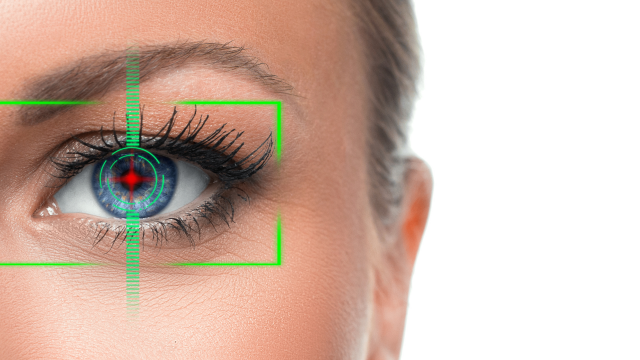
What is Laser Eye Surgery?
Laser eye surgery is a surgical procedure used to correct refractive defects in the eye. Refractive defects are vision problems such as myopia, hyperopia, and astigmatism. Such problems are caused by the eye’s inability to focus rays correctly.
Laser eye surgery corrects vision problems by shaping the corneal tissue in the front of the eye. The procedure is performed by applying local anesthesia to the outer surface of the eye.
What are the Types of Laser Eye Surgery?
Laser eye surgery can be performed with different techniques. The type of laser used during the procedure may also vary according to these techniques. The most commonly used laser eye surgery techniques are:
LASIK (Laser-Assisted In Situ Keratomileusis): LASIK changes the shape of the cornea by applying a laser to the inner layer of the cornea. The tissue layer in the middle of the cornea is cut and lifted into a thin layer called a flap. Next, the laser is applied to shape the substrate and the flap is placed back in place.
PRK (Photorefractive Keratectomy): PRK is performed by removing cells from the upper surface of the cornea. Then, the shape of the cornea is corrected by applying the laser to the upper layer of the cornea.
LASEK (Laser Assisted Epithelial Keratomileusis): LASEK is a mixture of PRK and LASIK techniques. The cells on the upper surface of the cornea are softened using a special solution and then removed. Next, the laser is applied to the lower layers of the cornea, and the upper layer is placed in place.
Who Is Suitable For Laser Eye Surgery?
Laser eye surgery is suitable for people who are healthy enough to shape the eye properly. It may also be suitable for people whose eye numbers have not changed or have changed slightly. Pregnant women, nursing mothers, and people with eye infections or eye diseases are not suitable for laser eye surgery.
What are the Risks of Laser Eye Surgery?
Laser eye surgery, like any surgical procedure, carries some risks. During the procedure, side effects such as cutting off the eye, inflammation, corneal damage, increase in intraocular pressure, dry eye, vision problems, and vision loss may occur. While most of these side effects are temporary, some may be permanent.
How Is Laser Eye Surgery Performed?
Laser eye surgery is performed by applying local anesthesia to the outer surface of the eye. During the procedure, the patient’s eye remains open, but the eye surface is numbed using eye drops. The top layer of the cornea is removed using a special tool to maximize the laser’s effect.
Then, the shape of the cornea is changed by applying the laser to the lower layers of the cornea. The procedure takes about 10-15 minutes and both eyes can be treated in the same session.
What Should Be Considered After Laser Eye Surgery?
After laser eye surgery, it is recommended that the patient rests for a few days and not rub their eyes. You should avoid washing your eyes with soap and water, use eye drops regularly and protect your eyes from sunlight.
You may also need to avoid activities such as sports and heavy lifting for several days. It is also important to make regular follow-up appointments with your doctor after laser eye surgery.
Conclusion
Laser eye surgery is a highly effective method for correcting vision problems. However, as with any surgical procedure, it carries some risks. For this reason, it is important for people who need this procedure to communicate well with their doctors, learn all the details before and after the procedure, and take the appropriate steps to perform the procedure.

